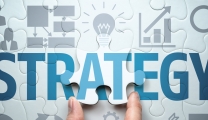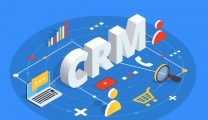What is model 7s?
Today, there are many companies from small to large learning 7S model to apply to business activities. 7S is abbreviated for the first 7 letters in English words, respectively, as follows:
- Strategy (Strategy)
- Systems (System)
- Structure
- Shared Values
- Staff (Staff)
- Style (style)
- Skill (Skill)
The 7S model appeared in the 80s by two former experts of the world's leading consulting firm McKinsey, Robert H. Waterman Jr. and Tom Peters. Since its launch until now, this model has received a lot of attention from people. Especially business owners because of the great benefits it brings to the organization.
It helps managers understand and grasp the internal factors of the company. The 7S model is understood as a simulation that synthesizes all problems in reality of a company's management apparatus. The above 7 factors are closely linked with each other and cannot be changed by any factors.
What elements does the 7S model include?
Hard factor
With the question of what is the hard factor of the 7S model, we can look at the first 3 "S" letters:
Structure
Structure is how a business operates. Easier to understand, Structure will help leaders easily manage activities in the company. It also monitors the cooperation between departments and departments in a systematic and scientific manner.
Strategy
In today's business market, it is extremely important to have a specific goal and a clear vision. In the 7S model, Strategy will help companies determine the direction to succeed, anticipate risks. Besides, it also helps to see the entire internal staff. Companies will quickly identify weaknesses in their business and eliminate factors that negatively affect their operations.
Systems
The final hard element in 7S is the content that reflects the business processes that operate day by day. It covers the most basic to the most complex jobs. This is how employees perform and complete assigned tasks.

Soft factor
There are 4 “S” mentioned in the soft factor. They are seen as elements that are not easily seen but are easily changed by people's behavior.
Style
This is how managers, executives, and leaders run their businesses. Style will be expressed through actions, gestures and words of the head. Each company has its own style of controlling all operations and adjusting to fit. This will make it easier for the company to achieve its goals.
Skill
The 7S model has clearly shown that it is necessary to show one's work skills regardless of the employee's position. This will help to make competition between business apparatuses more effective, and at the same time give customers a basis of trust to choose from.
Staff
Any company, small or large, is in dire need of talented employees. Human resources is one of the most important factors for the success of a business. Therefore, it is definitely an indispensable element in the 7S model.
Shared Values
This is a factor that is linked and can affect other factors. Specifically, value sharing is an enterprise's determination of its business motto and meaning of existence. These core values will be spread to all members.
5 basic steps to effectively apply the 7S model
To effectively use 7S tools in corporate governance, it is necessary to follow these specific steps:
Establish relationships between factors
The first thing when applying 7S model, enterprises need to determine the link between factors. Leaders need to understand this relationship in order to arrange personnel and divide work effectively. Along with that, company owners will evaluate to find weaknesses, strengths or conflicts between factors to make changes more appropriate.
Identify the apparatus model for organizational design
After step one, business owners need to figure out how it works for their company. By analyzing the link above, everyone will work towards and work towards a common goal. To do this, managers need to clarify their priorities, then research to find the perfect design for their organization.
Make the decision to change and do the things that are limited
At this stage, businesses need to draw up a more detailed plan. The coordination of departments according to work requirements and arrangement of elements in the 7S model also needs to be placed in the right place.
If the management style and structure do not align with the company's values, the leader needs to change promptly. It can be the transformation of the internal organizational structure, the management process or the modification of the way of communication to improve work efficiency.
Issue and amend as necessary
When the company's business situation is not progressing, the work is not done, the leader needs to make changes to positively impact the results. It is entirely possible to consult everyone in the business or hire a consultant to assist with this process.
Continually re-examine the 7 factors
Each factor in the 7S model will always interact and directly affect each other. Every single factor change will disrupt the balance of the remaining 6 "S". Therefore, for smooth operation of the business, it is necessary to constantly consider 7S.












Replies to This Discussion